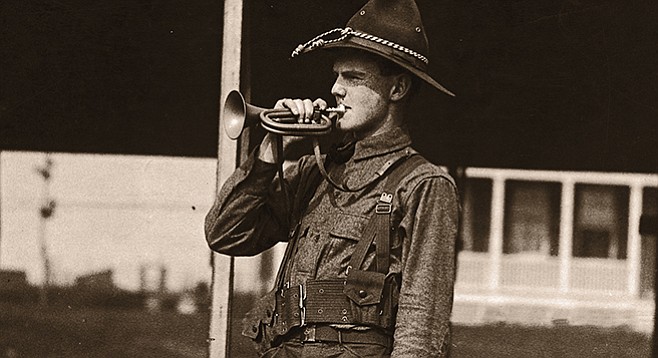 Facebook
Facebook
 X
X
 Instagram
Instagram
 TikTok
TikTok
 Youtube
Youtube

Ed. Note: November 2018 marks 100 years since the end of World War I. The San Diego Reader will devote this month’s poetry columns to the poets who wrote about their experiences of that war.
Anthem for Doomed Youth
Dulce et Decorum Est

Wilfred Owen (1893-1918) was an English poet and one of if not the best-known of the War Poets of World War I. His realistic depiction of warfare, especially in the trenches, was influenced in large part by his friend and fellow poet Siegfried Sassoon, after the two poets first met in hospital recovering from their wounds. His use of half-rhyme and assonance set his poetry above that of many others working in verse at the time, including his mentor Sassoon. Owen served as a second lieutenant during the war and he was killed in action on November 4, 1918, exactly a week before the armistice was signed on November 11.


Ed. Note: November 2018 marks 100 years since the end of World War I. The San Diego Reader will devote this month’s poetry columns to the poets who wrote about their experiences of that war.
Anthem for Doomed Youth
Dulce et Decorum Est

Wilfred Owen (1893-1918) was an English poet and one of if not the best-known of the War Poets of World War I. His realistic depiction of warfare, especially in the trenches, was influenced in large part by his friend and fellow poet Siegfried Sassoon, after the two poets first met in hospital recovering from their wounds. His use of half-rhyme and assonance set his poetry above that of many others working in verse at the time, including his mentor Sassoon. Owen served as a second lieutenant during the war and he was killed in action on November 4, 1918, exactly a week before the armistice was signed on November 11.
Comments